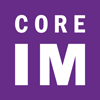Core IM
Hypokalemia is one of the most frequent and significant electrolyte disorders. As the main ion that determines the electrochemical gradient of cells, potassium plays a central role in almost all cellular processes.
Clinically, alterations in potassium levels could easily lead to life-threatening ventricular arrhythmias. Thus, an easy, practical, and simple approach to the management and replenishment of potassium is of significant importance to the internist. In addition, potassium repletion practices are not frequently scrutinized for the evidence behind them, so it is highly relevant to highlight the existing evidence behind these practices.
The Core IM team invites you to join them for a discussion on Hypokalemia & Potassium Repletion: 5 Pearls Segment.
First, listen to the podcast. After listening, ACP members can take the CME/MOC quiz for free.
CME/MOC:
Up to 0.5
AMA PRA Category 1 Credits ™ and MOC Points
Expires October 17, 2026
active
Cost:
Free to Members
Format:
Podcasts and Audio Content
Product:
Core IM
Welcome to Core IM, a virtual medical community! Core IM strives to empower its colleagues of all levels and backgrounds with clinically applicable information as well as inspire curiosity and critical thinking. Core IM promotes its mission through podcasts and other multimodal dialogues. ACP has teamed up with Core IM to offer continuing medical education, available exclusively to ACP members by completing the CME/MOC quiz.

Pearl 1: How much of a deficit is hypokalemia and what is the evidence behind repletion?
- Hypokalemia
- Defined as K < 3.5 mEq/L
- Can be from total body deficit or intracellular K shifts
- Variation on exact amount deficit:
- Some quote 1 mEq below 4 = 100-200 mEq deficit vs. every 0.3mmol is 100 mEq of K+ deficit
- Note: Does not account for ongoing K losses
- Defined as K < 3.5 mEq/L
- Where does the data for potassium repletion come from?
- These is observational data that low K levels are associated with higher rates of ventricular arrhythmias in patients who were
- Post-myocardial patients
- Post-cardiac surgery patients
- Active diuresis in heart failure
- However, most of this evidence comes from observational studies decades ago before beta-blockers were widely used
- In a 2012 study, patient with acute myocardial infarction had mortality rates lowest in those with a post-admission potassium level between 3.5 and <4.5 mEq/L
- Despite these observations, we do not have evidence that repleting serum K leads to better outcomes!
- These is observational data that low K levels are associated with higher rates of ventricular arrhythmias in patients who were
Pearl 2: Causes of Hypokalemia
- Four MAIN buckets!
- Poor oral intake:
- Less common
- <1 g intake/day
- Excretion in the urine:
- Diuretics
- Secondary to chloride depletion and alkalosis
- Torsemide tends to lead to less hypokalemia than furosemide
- Type 1 & Type 2 Renal Tubular Acidosis (RTA)
- Think for hypokalemia + non-anion gap acidosis
- Increased distal delivery of Na + Cl
- Normal saline (does not contain K)
- Increased Na delivery to distal nephron → K loss in urine
- Excretion with non-absorbable anions. Example:
- Antibiotics: IV Penicillin in large doses, aminoglycoside
- Excess [bicarbonate] with vomiting or NG suction
- Excess [bicarb] will be urinated out and takes K+ along with it!
- B-hydroxybutyrate in DKA
- Osmotic diuresis Ex:
- Hyperglycemia
- Urea excretion after relief of chronic urinary obstruction
- Normal saline (does not contain K)
- Diuretics
- GI loss:
- ABOVE: Vomiting/NG Tube losses
- Loss of Cl rich fluid → Increased [bicarbonate] → excess bicarb will be urinated and takes K+ along with it
- So technically a urinary loss
- Loss of Cl rich fluid → Increased [bicarbonate] → excess bicarb will be urinated and takes K+ along with it
- BELOW: Diarrhea/Laxatives/Enemas
- Anything that increase stool volume can lead to K loss through the GI tract
- ABOVE: Vomiting/NG Tube losses
- Intracellular shifts:
- ↑ B-adrenergic activity (Catecholamines)
- Increased epinephrine → K into cells
- Activate Na/K pumps
- Examples of highly adrenergic states:
- Acute MI
- Alcohol withdrawal
- Panic attacks (anxiety & hyperventilation)
- Increased epinephrine → K into cells
- Insulin
- “Insulin also pushes potassium in to cells”
- Promotes Na/K-ATPase activity and pulls K+ into cells
- Alkalemia
- Favors K+ into cells and H+ out of cells
- ↑ Hematopoietic cell production
- ↑ K+ uptake by new cells
- Ex. GM-CSF, vitamin B, folic acid
- Rare: periodic paralysis, hypothermia
- ↑ B-adrenergic activity (Catecholamines)
- Poor oral intake:
Pearl 3: What is the goal for K+ repletion?
- Normal range: 3.5 - 4 mEq/L
- Goal is WITHIN this range
- Depending on the patient:
- Examples:
- Patient on diuretic
- Continuous loss of K → more aggressive repletion
- Patient with uncomplicated pneumonia
- Low risk for ventricular arrhythmia → less aggressive repletion
- Patient on diuretic
- Examples:
- Urgency of K repletion is patient dependent
- More urgent (patients who may have a more sensitive myocardium)
- Post acute MI
- Active diuresis (heart failure)
- Less urgent (avoid repleting to 4.0 exactly)
- No cardiac risk factors
- Good PO intake
- More urgent (patients who may have a more sensitive myocardium)
- Depending on the patient:
- Goal is WITHIN this range
-
- What about long-term, chronic low K?
- May cause metabolism issues and linked to other adverse outcomes
- High K diet → Decreased incidence of stroke, cardiovascular events, and mortality
- May cause metabolism issues and linked to other adverse outcomes
- What about long-term, chronic low K?
Pearl 4: How to replete potassium?
- IV vs. PO
- If they have a gut, try to use it!
- If the patient has GI distress, divide into multiple doses over the course of the day
- IV can be limited in that small mEq are given an hour infusion.
- If they have a gut, try to use it!
- Multiple K+ supplements are available
- Consider what ELSE the patient might need
- Potassium chloride
- If patient has metabolic alkalosis
- Potassium phosphate
- If patient has phosphate deficit
- Potassium citrate (especially for outpatients!)
- If patient has kidney stones
- Citrate is a natural stone inhibitor that chelates calcium
- If patient has hypocitraturia
- If patient has kidney stones
- Note: Potassium phosphate & citrate are also on K rich foods like figs, dried fruits, and avocados!
- Potassium chloride
- Consider what ELSE the patient might need
- What are other options?
- Check the patient’s medications!
- Is there something causing kaliuresis? (urinary potassium excretion)
- Furosemide
- Consider switching to torsemide
- Less kaliuresis
- Good oral absorption
- Consider switching to torsemide
- PPIs
- Can lead to hypomagnesemia which can lead to hypokalemia
- Fluids
- Furosemide
Pearl 5: When to order potassium labs?
- Do we over check labs?
- Often we check twice a day for patients who are undergoing diuresis
- Decide based on the clinical scenario:
- Ex: patient is not urinating much (low diuresis)
- Don’t need to check labs!
- Ex: patient is not urinating much (low diuresis)
- Decide based on the clinical scenario:
- Think if routine morning labs are needed for you patient
- Harms of checking labs that are not needed
- Time (of everyone involved)
- Patient comfort
- Money
- Harms of checking labs that are not needed
- Often we check twice a day for patients who are undergoing diuresis
- Changing practices around labs and repletion
- Requires interdisciplinary education
- Requires a range of physicians (interns to attendings) to change the framework of when to replete K!
Contributors
Shreya Trivedi, MD, ACP Member – Host / Editor
Benjamin Osher, MD - Author
Mahathi Komaragiri, MD - Author
Santiago Callegari, MD - Author
Melanie Koenig, MD - Expert
Anthony Breu, MD, ACP Member - Expert
Reviewers
Jeff William, MD
Larissa Kruger-Gomes, MD
Those named above, unless otherwise indicated, have no relevant financial relationships to disclose with ineligible companies whose primary business is producing, marketing, selling, re-selling, or distributing healthcare products used by or on patients. All relevant relationships have been mitigated.
Release Date: October 18, 2023
Expiration Date: October 17, 2026
CME Credit
This activity has been planned and implemented in accordance with the accreditation requirements and policies of the Accreditation Council for Continuing Medical Education (ACCME) through the joint providership of the American College of Physicians and Core IM. The American College of Physicians is accredited by the ACCME to provide continuing medical education for physicians.
The American College of Physicians designates this enduring material (podcast) for .5 AMA PRA Category 1 Credit™. Physicians should claim only the credit commensurate with the extent of their participation in the activity.
ABIM Maintenance of Certification (MOC) Points
Successful completion of this CME activity, which includes participation in the evaluation component, enables the participant to earn up to .5 medical knowledge MOC Point in the American Board of Internal Medicine’s (ABIM) Maintenance of Certification (MOC) program. Participants will earn MOC points equivalent to the amount of CME credits claimed for the activity. It is the CME activity provider’s responsibility to submit participant completion information to ACCME for the purpose of granting ABIM MOC credit.
How to Claim CME Credit and MOC Points
After listening to the podcast, complete a brief multiple-choice question quiz. To claim CME credit and MOC points you must achieve a minimum passing score of 66%. You may take the quiz multiple times to achieve a passing score.


